#Teutonic castle
Explore tagged Tumblr posts
Text

Zamek Golubski, Golub-Dobrzyń, Poland
Courtesy: Golub-Dobrzyń
#art#design#architecture#history#luxury lifestyle#style#luxury house#castle#luxury home#zamek#poland#fortress#golub-dobrzyn#zamek golubski#teutonic
123 notes
·
View notes
Text
The Magic of Old Castles...
Defensive fortresses were probably built since the birth of the first cities (the date of the beginning of civilization is constantly changing with new discoveries and today we can risk the thesis that the first organized settlements and cities were established about 12 thousand years ago, e.g. Qaramel).

Medieval castles became a symbol of the long era of the Middle Ages in Europe, although at that time they were also built in India and Arab countries.



The French castle Doué-la-Fontaine from around 950 is considered the oldest in Europe. The largest castle the size of a large medieval city was the former fortress of the Teutonic Order in former Prussia (now Poland). Built for almost 200 years, it reached a total area of about 21 hectares and the volume of buildings exceeded a quarter of a million cubic meters. Additionally, from the south, the castle was adjacent to a slightly smaller city surrounded by defensive walls, creating one huge impregnable fortress with the monumental castle.

Castle interiors were often richly painted with colourful scenes from court life or religious scenes. Since the 16th century, many old castles have been rebuilt and destroyed as impractical buildings in the face of changes in warfare. However, in the 19th century, an unexpected turn occurred, a renewed fascination with the Middle Ages in architecture led to the emergence of neo-Gothic. Today, distant echoes of castle architecture can be found in many buildings from the turn of the 19th and 20th centuries, including railway stations, official and utility buildings (such as the famous Tower Bridge in London).
#art ai#ai draw#ai drawing#architecture#artificial intelligence#bandcamp#ai artwork#ai generated#ai art#ai#ai gallery#medieval#medieval art#middle ages#15th century#castle#medieval castle#medieval history#marienburg#malbork#teutonic knights#prussia#france#fog#mystic#mystery#knights#europe#kingdoms#ai video
8 notes
·
View notes
Text


Malbork Castle, Poland
Built in 13th century by the Teutonic Knights, former seat of the State of the Teutonic Order, from 15th century the residence of Polish kings and later the Kingdom of Prussia; significantly damaged in 1945 and restored after Second World War is now the largest castle in the world raised with bricks and one of the most stellar monuments ever created.
#summer days#knightcore#photo by me#original phography#teutonic order#knight core#medieval revival#castle#nostalgia#historical reenactment#knights#🗝️
12 notes
·
View notes
Text

PL:
Zamek krzyżacki, Malbork, Polska
Zamek w Malborku pełen jest legend i tajemnic. Jedną z najbardziej znanych jest historia Marii z Brzozowej, która miała rzekomo zostać zamurowana żywcem w jednej z komnat zamku. Według innej legendy, pod zamkiem miała znajdować się kryjówka, która skrywa skarby Zakonu Krzyżackiego. Oczywiście, nie ma potwierdzenia, że te historie są prawdziwe, ale to właśnie one sprawiają, że Malbork jest jeszcze bardziej tajemniczym i intrygującym miejscem.
EN:
Castle of the Teutonic Order, Malbork, Poland
Malbork Castle is full of legends and mysteries. One of the most famous is the story of Maria of Brzozowa, who was supposedly bricked up alive in one of the castle's chambers. According to another legend, there was supposed to be a place under the castle that conceals the treasures of the Teutonic Order. Of course, there is no confirmation that these stories are true, but they are what make Malbork an even more mysterious and intriguing place.
#malbork#zamek#castle#poland#polska#architecture#architektura#widok#landscape#historia#history#gothicarchitecture#gothic architecture#architekturagotycka#architektura gotycka#krajobraz#krzyżacy#zakon krzyżacki#teutonic order#teutonic knights#teutonicorder
6 notes
·
View notes
Text

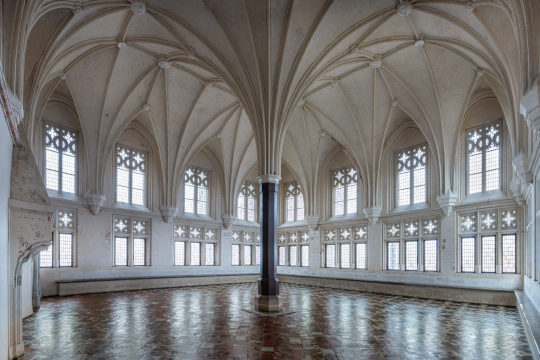
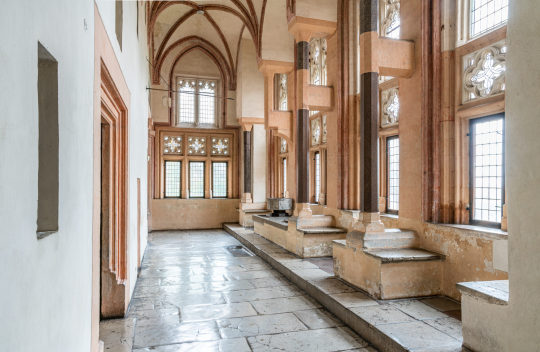

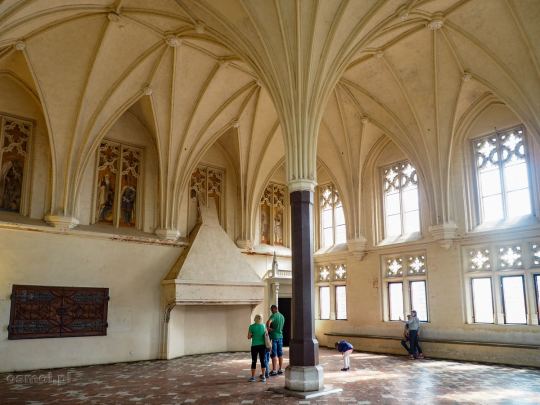
13 notes
·
View notes
Text
3D Konigsberg Castle Model https://www.facebook.com/myownkonigsberg/posts/digital-3d-model-of-k%C3%B6nigsberg-castle/3754381991247851/


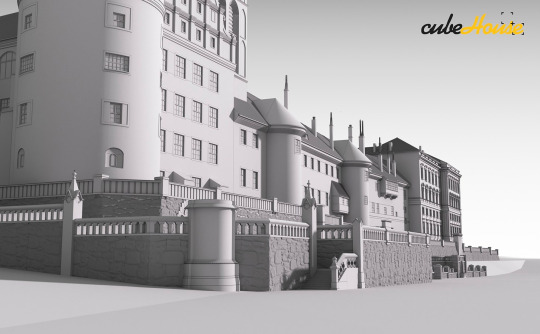
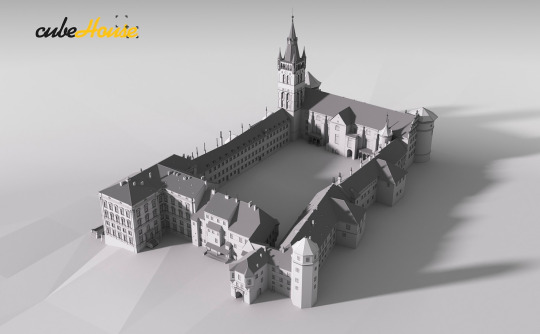
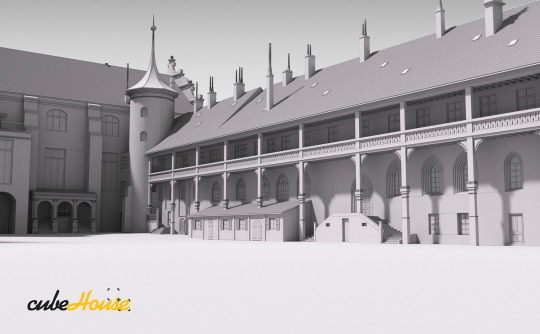
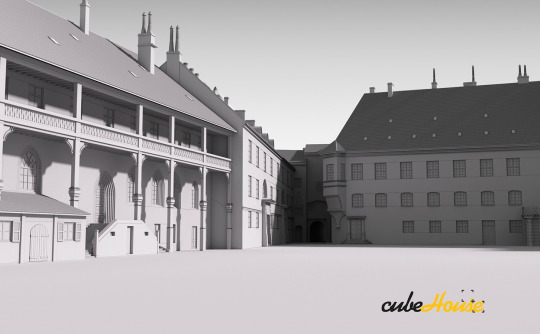

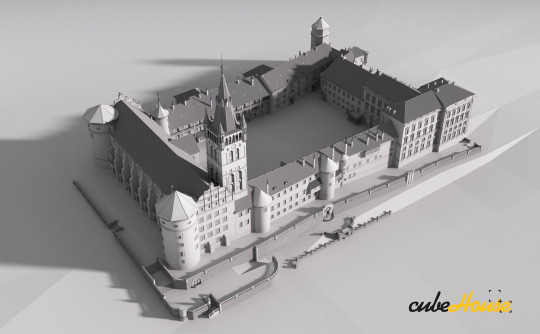
#königsberg#east prussian heritage#german history#teutonic heritage#architecture#art#gothic#castle#schloss
3 notes
·
View notes
Text
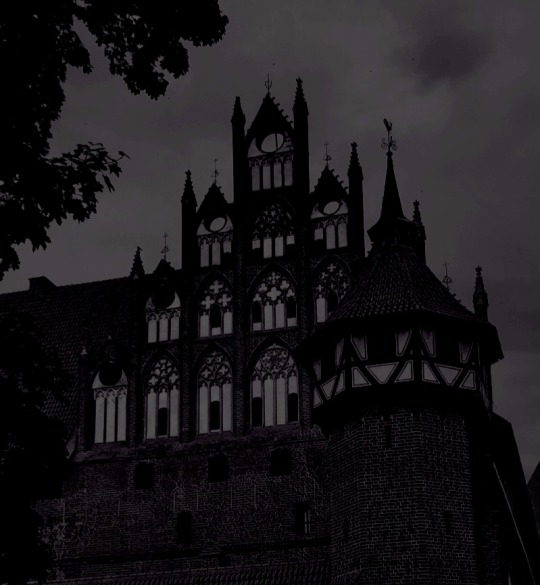
Malbork Castle, Poland
I will post more of my edits because it was truly magnificent inside 🕯
#gothic architecture#gothic#architecture#knights#castle aesthetic#goth#goth aesthetic#vampire core#churches#black and white#teutonic order#malbork#dark academia#dark aesthetic#dark fantasy#Did the Teutonic order pillage and kill people? Yes. did they also know how to build tf out of a castle? Double yes
8 notes
·
View notes
Text

“The colourful brigade of German knights were trooped about a Castle or Palace, to draw wonder and awe from the commonalty—propping up the view of their lieges.”
From “A Study of Knights; Their Stations and Issues of Order” by Walter Hitchcock (1964)
2 notes
·
View notes
Text
Castle of the Teutonic Order in Malbork
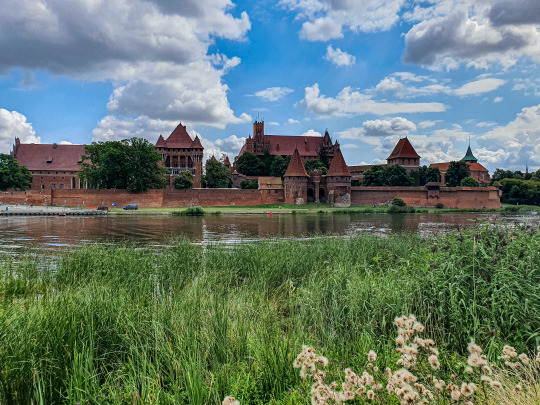
Embark with me on a virtual journey to the imposing Malbork Castle, a UNESCO World Heritage Site situated on the banks of the Nogat River in Poland. This colossal fortress, once the seat of the Teutonic Order, invites you to explore its labyrinthine halls, towering walls, and delve into the epic tales of knights and crusaders that echo through its storied chambers.
Malbork Castle received UNESCO recognition in 1997, celebrating its exceptional cultural and historical significance. The inscription acknowledges the castle's role in the medieval history of the Teutonic Order and its enduring architectural legacy.
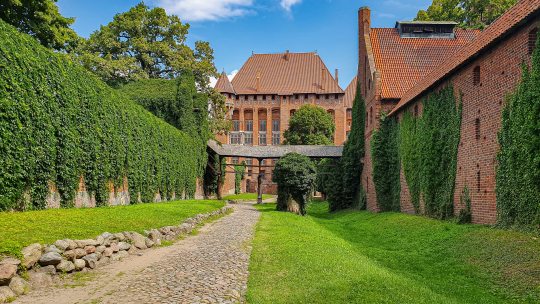
Stand before the grandeur of Malbork Castle, a testament to Teutonic Order's architectural prowess. The castle complex, with its monumental walls and towers, reflects the military might and strategic importance of this medieval stronghold.
Immerse yourself in the history of Malbork at the Castle Museum, where artifacts, weaponry, and medieval artifacts paint a vivid picture of life within these stone walls. The museum offers a fascinating journey through the castle's rich past.
Ascend to the High Castle, the central part of the fortress, and marvel at the intricate details of its Gothic architecture. Explore the Great Refectory, where knights once gathered for communal meals, and imagine the echoes of their camaraderie.
Discover the ingenious defensive system of Malbork Castle, including drawbridges, moats, and defensive towers. These features showcase the military innovation of the Teutonic Order in protecting their stronghold.

Visit the Chapel of St. Anne, a gem of Gothic architecture within the castle walls. The chapel's intricate decorations and sacred ambiance offer a glimpse into the spiritual life of the Teutonic knights.
Wander along the castle's riverside promenade and enjoy picturesque views of the Nogat River. The surrounding landscape, with its greenery and serene waters, complements the castle's imposing presence.
Experience the castle's vibrant atmosphere during summer cultural events, including medieval reenactments, concerts, and theatrical performances. These events breathe life into the ancient stones and transport visitors back in time.
In conclusion, Malbork Castle invites us to step into a realm where history unfolds in the shadows of towering walls and Gothic arches. As a UNESCO World Heritage Site, it stands as a sentinel of Poland's medieval legacy and a symbol of the Teutonic Order's enduring impact. When you're ready for a digital odyssey through a fortress of legends, Malbork promises to captivate and inspire. 🏰🇵🇱✨
2 notes
·
View notes
Video
youtube
Music: GOTARD - "The Cross on the horizon horizon” https://gotard.bandcamp.com/track/the-cross-on-the-horizon-feat-lamia-darkgrace
Video: Delsograf
Rekonstrukcja zamku na podstawie opisów wygenerowana przez AI
------------------------
(Eng) The construction of the castle in Złotoria near Toruń, on the site of the wooden stronghold of the Masovian princes, was initiated after 1343 by King Casimir the Great. The castle guarded the northern borders of the Kingdom of Poland and changed hands over the centuries; Ultimately, it passed into the hands of the Teutonic Order, but it was soon bought by King Jagiełło of Poland. This is the first stronghold that was destroyed at the beginning of the great war of the Teutonic Order with Poland. Since then, the castle has remained in ruins. It is not known what exactly the castle looked like. Part of the corner tower and the outer ward walls have been preserved. The ruins of the outer ward are washed away by the nearby Vistula River. The castle was built on a rectangular plan. The castle complex included a high tower, a residential building and defensive walls. The former castle courtyard, measuring 35 x 50 m, is now filled in and overgrown with vegetation. Picturesque ruins stimulate the imagination. It is worth visiting the nearby historic Toruń.
-----------------------------------------
(PL) Budowę zamku w Złotorii pod Toruniem, na miejscu drewnianej warowni książąt mazowieckich, zapoczątkował po 1343 roku król Kazimierz Wielki. Zamek strzegł północnych granic Królestwa Polskiego i na przestrzeni wieków przechodził z rąk do rąk; Ostatecznie przeszedł w ręce Zakonu Krzyżackiego, ale wkrótce został kupiony przez króla polskiego Jagiełłę. Jest to pierwsza warownia, która została zniszczona na początku wielkiej wojny Zakonu Krzyżackiego z Polską. Od tego czasu zamek pozostaje w ruinie. Nie wiadomo, jak dokładnie zamek wyglądał. Zachowała się część narożnej wieży i murów przedzamcza. Ruiny przedzamcza zmywa pobliska Wisła. Zamek wzniesiono na planie prostokąta. Zespół zamkowy obejmował wysoką wieżę, budynek mieszkalny i mury obronne. Dawny dziedziniec zamkowy o wymiarach 35 x 50 m jest obecnie zasypany i porośnięty roślinnością. Malownicze ruiny pobudzają wyobraźnię. Warto odwiedzić pobliski zabytkowy Toruń.
#youtube#castle#brick architecture#teutonic order#medieval#zamek#ruins#średniowiecze#zamek gotycki#gothic castle#gothic#gotard#historic#music#trip#travel#poland#złotoria#rekonstrukcja#reconstruction#vistula#prussia#prusy#jagello#polska#toruń#torun#summer#country#wieś
0 notes
Text

Teutonic prosecutor, commander of the Ortelrsburg castle. He takes care of the local administration and knights. Huno is the apple of his eye. He is something of a father figure to him.
2K notes
·
View notes
Text
New year resolution: be a Teutonic knight ദ്ദി ˉ͈̀꒳ˉ͈́ )
I'll be searching for historical reenactment groups near the place where I'll study, I have some of the clothes already and can carry a sword well, and am learning horse riding. they must take me in and hopefully, during summer holidays I'll be chilling by the castle walls or on a field with a friend and at the same time be a tourist attraction for people visiting a medieval fair

5 notes
·
View notes
Text

PL:
Zamek krzyżacki, Malbork, Polska
Dlaczego zamek jest "naj"?
1) Największy zamek z cegły na świecie - twierdza tak warowna, że nigdy nie zdobyta w sposób militarny, mieszkańcy mogli przeżyć 3 lata bez żadnych dostaw, a do części klasztornej prowadziły 4 mosty przerzucone ponad wodą.
2) Największy okap kuchenny na świecie - z kuchni wychodziło najznamienitsze jedzenie doby średniowiecza, potwierdzały to ważne głowy ówczesnej Europy, smakował go również król Kazimierz Wielki.
3) Największa rzeźba średniowiecznej Europy - Madonna Malborska liczy ponad 8 metrów wysokości, została odtworzona przez współczesnych konserwatorów, pokryta mozaiką zawierającą prawdziwe złoto. Widać ją na zamkowych murach kaplicy, spod budynku kasy. Co ciekawe, szklane kostki zostały sprowadzone z Wenecji, a złote elementy z Gdańska.
4) Największa liczba latryn w warowni w wiekach średnich - nawet kucharze mieli swoją wygódkę, a jako papier toaletowy często służyły im liście kapusty, które miały też działanie lecznicze, np. przeciwzapalne.
5) Największa liczba studni na zamczysku w wiekach średnich. Co ciekawe w twierdzy był też dostęp do wody bieżącej.
6) Najstarsze na tych ziemiach ogrzewanie podłogowe - wielkie kamienie w piwnicy były podgrzewane w paleniskach i działały jak akumulacyjne piece. Ciepło wydostawało się do sal przez specjalne otwory w posadzkach.
EN:
Castle of the Teutonic Order, Malbork, Poland
In what areas is the castle in Malbork record-breaking?
1) The largest brick castle in the world - a fortress so fortified that it was never conquered militarily, the inhabitants could survive 3 years without any supplies, and the monastery part was accessed by 4 bridges thrown over the water.
2) The largest kitchen hood in the world - the most exquisite food of the Middle Ages came out of the kitchen, this was confirmed by important heads of Europe at that time, it was also tasted by King Casimir the Great.
3) The largest sculpture of medieval Europe - the Malbork Madonna is over 8 meters high, it was recreated by modern conservators, covered with a mosaic containing real gold. It can be seen on the castle walls of the chapel, from under the ticket office building. Interestingly, the glass cubes were brought from Venice, and the gold elements from Gdańsk.
4) The largest number of latrines in a stronghold in the Middle Ages - even cooks had their own toilet, and cabbage leaves were often used as toilet paper, which also had medicinal properties, e.g. anti-inflammatory.
5) The largest number of wells in a castle in the Middle Ages. Interestingly, the fortress also had access to running water.
6) The oldest underfloor heating in these lands - large stones in the basement were heated in fireplaces and acted as storage furnaces. The heat escaped into the rooms through special holes in the floors.
#malbork#zamek#castle#polska#poland#historia#history#architecture#architektura#gothicarchitecture#gothic architecture#architekturagotycka#architektura gotycka#widok#landscape#krajobraz#krzyżacy#zakon krzyżacki#teutonic order#teutonic knights#teutonicorder
6 notes
·
View notes
Photo

Henry IV of England
Henry IV of England ruled as king from 1399 to 1413 CE. Known as Henry Bolingbroke, Duke of Lancaster before he became king, Henry clashed with his cousin Richard II of England (r. 1377-1399 CE) and was exiled in 1397 CE. Returning to England with a small army in the summer of 1399 CE, Henry made himself king as Richard's support collapsed. Kicking off his reign with the murder of his predecessor, Henry would face major rebellions in both England and Wales, and he frequently clashed with Parliament, particularly the 'Long Parliament' of 1406 CE. Henry was the first of the kings from the House of Lancaster and he was succeeded by his son Henry V of England (r. 1413-1422 CE).
Birth & Family
Henry was born in April 1366 CE at Bolingbroke Castle in Lincolnshire, the son of John of Gaunt (l. 1340-1399 CE), himself the son of Edward III of England (r. 1327-1377 CE) and so a claimant for the throne of Richard II (who was the grandson of Edward III and the son of Edward the Black Prince, l. 1330-1376 CE). John was a powerful but unpopular figure who had been passed over for the throne because he had supported corrupt nobles and officials identified by Parliament. Henry Bolingbroke's mother was Blanche of Lancaster, daughter of the Duke of Lancaster. The young nobleman was given the title Earl of Derby, the first of many he would acquire over his career.
Henry married Mary of Bohun (b. c. 1369 CE) on 5 February 1381 CE, but she died during childbirth in 1394 CE. The couple's most famous son was Henry, future Henry V, born on 16 September 1387 CE. Henry, now king, married again on 7 February 1403 CE, this time to Joan of Navarre (l. c. 1370-1437 CE). Henry had a typical noble upbringing where he showed a flair for the medieval tournament, courage, piety, and an interest in literature. The young Henry had his share of adventure when he twice went to fight pagans in Lithuania as part of the long-running Northern Crusades (12-15th century CE) alongside Teutonic Knights. There would also be a pilgrimage to Jerusalem before he concentrated on his ambitions in England.
Continue reading...
18 notes
·
View notes
Text
Kingdom of Prussia/Prussia

Facts about him:
Gender: Male
Height: 5'9"
Mother: Teutonic Order
Never knew her but doesn't care
He hates her anyways
Father: Holy Roman Empire
Loves him so much
Was taught how to fight by him
Took care of him by brushing his wings, washing his clothes, fixing some mistakes in his plans, etc
Is innocent just like him
Somewhat scared of him when he gets pissed off
Brother: Austrian Empire
They aren't really close
Doesn't really know him on a personal level
A.E was separated from HRE and Prussia when Teutonic decided to just leave them behind
Is pretty neutral with Austrian's husband, Kingdom of Hungary
Didn't like the fact that he called HRE an "Old man who should've been dead ages and is long overdue", to which he beat the living shit out of him
Boyfriend: Russian Empire
They met when they were young children and were really close friends
Later they became allies
And then Russian Empire got the balls to ask him to be his boyfriend
Being a dense man, he never knew that Russian Empire was courting him all these years. He thought he was being nice-
Absolutely adores him
Got to experience what it feels like to fly because Russian Empire just
R.E's "Birdie"
Absolutely heartbroken when R.E died, an swore he will never love anyone else for as long as he lives
Every night, he would always call out to him and cry for him in his sleep
Son: German Empire/Reichtangle
Was shocked when his son brought someone (Austria-Hungary) to his castle
Even more shocked that his son had a boyfriend, but he approved it all the way
Cried during his wedding
He loves him so much that he still babies him even though he's a married adult man
Relation: Tsardom of Russia
Hated the fact that he was so abusive to Russian Empire
Eventually he starts to respect him after knowing what he went through and the great lengths he took just to protect his son
Mortified when Tsardom gets pissed off and goes full eagle
Is neutral towards him
Death: Natural causes
He was reunited with his beloved at last
German Empire was deeply saddened, and despite having hatred towards Russian Empire, he was happy his father was in a better place
No matter how hard he tries, he can't cook shit
Always wished he could fly
His hair is short, so that's why he treats the fake hair on his helmet as if it were real
Pretty insecure about his appearance
Gets EXTREMEYLY jealous that many countries, including French Empire, are hitting on HIS man
Oreo... I mean look at him-
He finally understands why Russian Empire loves peaches so much👀
As said earlier, he's really innocent like Holy Roman Empire. He doesn't really understand the signs of love or when someone's hitting on him
He's really naïve and slow on picking up certain things (Be nice to him :( )
Unlike Russian Empire, he doesn't speak formally and is really laid-back despite having an entire kingdom
#country humans#countryhumans#artists on tumblr#my art#art#artwork#digital art#digital drawing#countryhumans kingdom of prussia#kingdom of prussia#countryhumans prussia#prussia
15 notes
·
View notes
Text

Bird's Eye View of Konigsberg. Marking the fall of Konigsberg on April 9th. Konigsberg was called 'The City of Dreams,' and 'The Paris of The North', it was a prosperous port-city built by the Teutonic Order and stood for 800 years. 90% of the buildings were destroyed by The British RAF during wwi. The castle in the center of this composition was the birth place of Friedrich the Great, and also famously housed Napoleon at one time, in addition to the German Monarchs. I've fallen in love with the medieval gothic aesthetic of this lost city. I can think of no greater symbol of loss than a city of dreams that will never be rebuilt.
7 notes
·
View notes